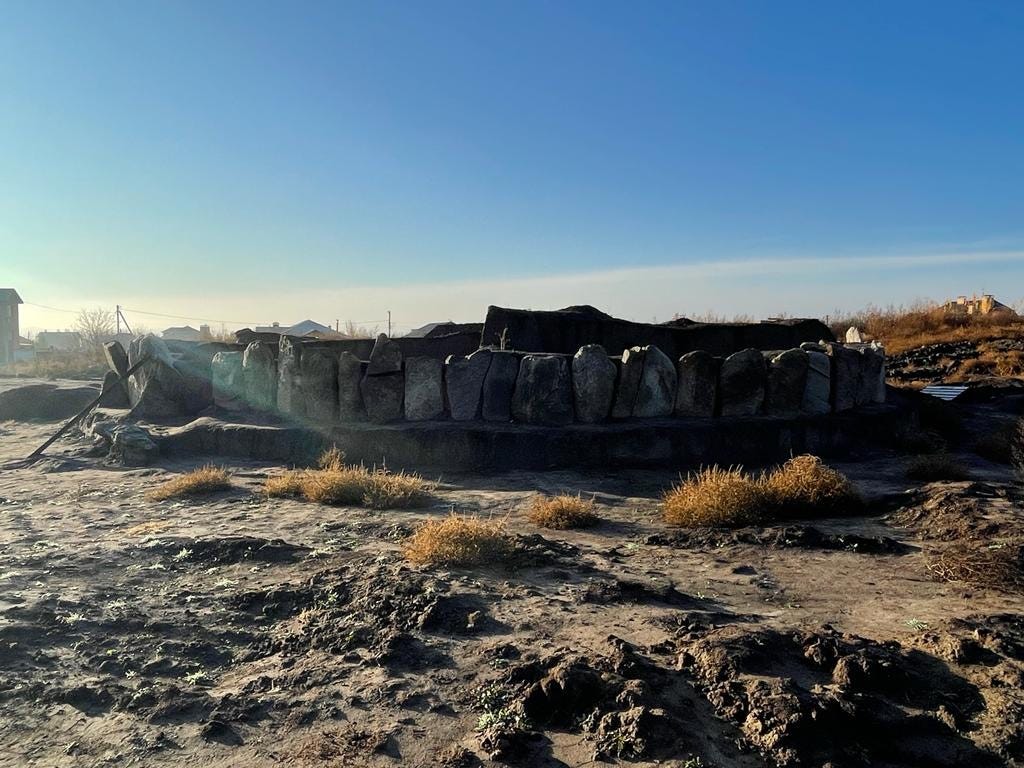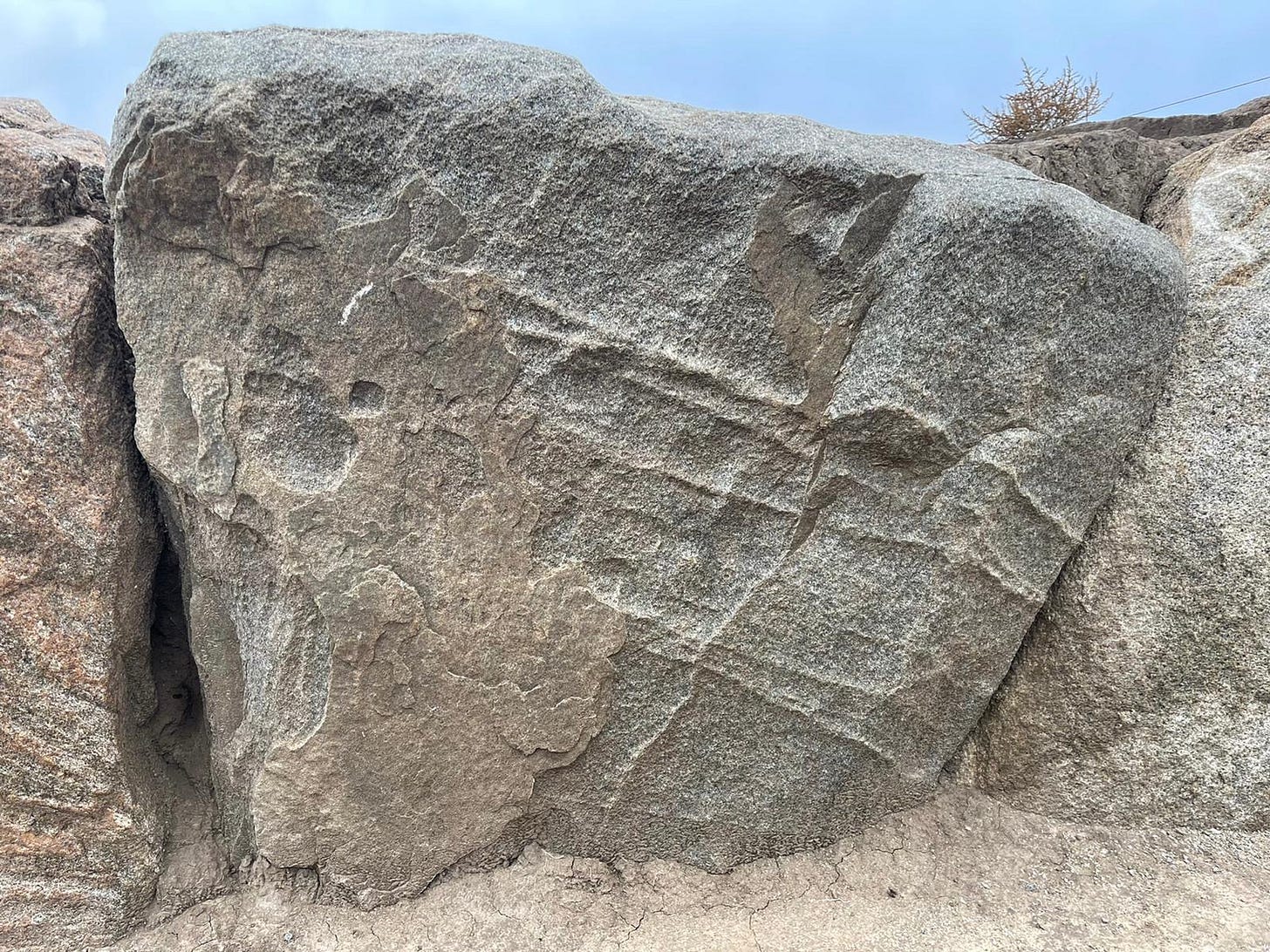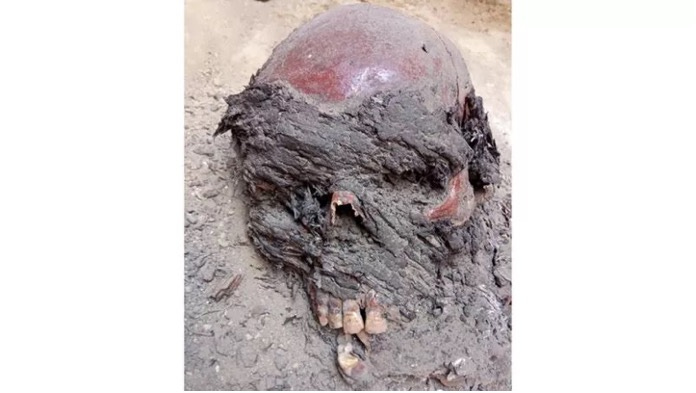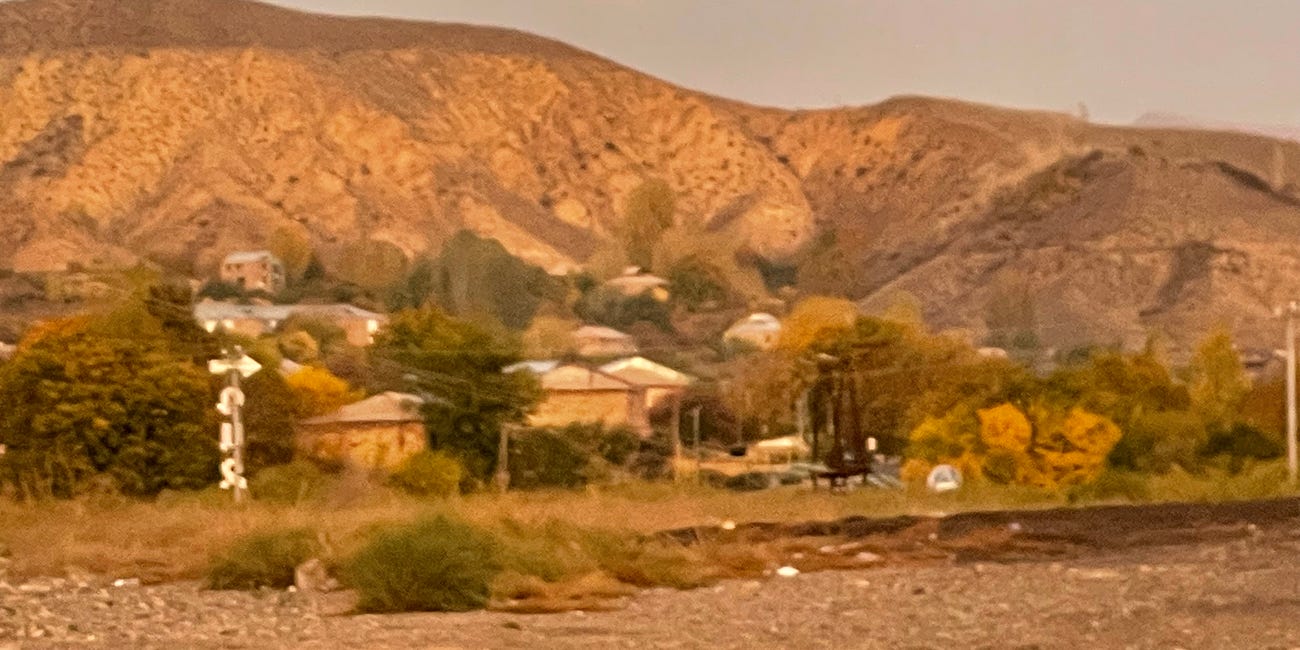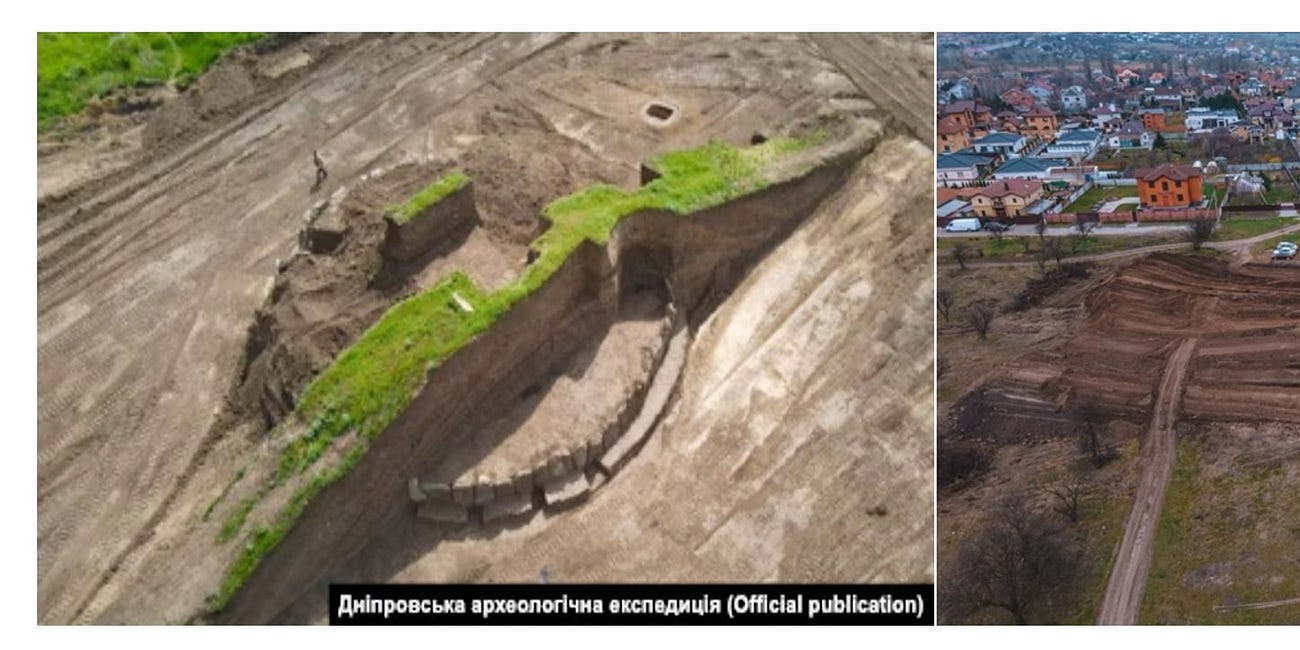Stone Palisade Walled Circle Documented
Finding Manuland III
The first time I went to that uncovered rondel in Dnipro, touching its stones felt like caressing the Delphic Omphalos; the navel of ancient Greece.
In fact, it was much older than any material reminder we have of the oracle at Greece’s cultic centre.
The Dnipro cromlech had already been buried for a millennium when Stonehenge was being assembled. Newgrange had been built around five-hundred years after the Dnipro stone palisade.
Emain Macha, Ireland’s holiest site, might have been constructed several millennia after the Dnipro Mane that covered the stones. “Who had created the Dnipro rondel? Why? Also, why did they cover it up with the mane?” I wondered.
Up until that moment, I hadn’t ever thought much about how common barrow graves were in our culture or about who had built them, and for what purpose. They were nice objects and tangible connectors with an ancient past, but somewhat mysterious. Was it even possible to know much about them, or who had built them? Mounds were not at all part of my daily, weekly or even monthly conscious thought stream.
A few weeks after the Dnipro stone circle had emerged from underneath the ancient soil, apart from a few local activists, most people lost interest. Normal every day modern life reasserted itself. The Covid pandemic was ongoing. Russia was threatening to invade Ukraine again.
My work was focussed on seeking out early warning indicators of Russia’s meddling in Ukraine’s affairs. The Mound Guardians and some locals living near the cromlech, though, continued to contact me about it, long after my managers had forgotten about the issue. They would implore me to go visit. Their appeals made me feel useful. I couldn’t justify their faith in my power to stop the bulldozers.
We suspected the housing developers were destined to remove this fragile inconvenient stone obstacle preventing more elite houses from being built. I was in a very minor position in the Irish diplomatic corps. I was a guest in Ukraine. I had no mana with which to counteract the housing developers’ power.
On each visit to the monument (perhaps because it was something I could do), I carefully photographed each of the stones. Usually, from a distance, I’d spot a suburban dog walker or two out from the plush villas nearby. They wouldn’t even glance any longer at the mausoleum which I was so microscopically examining and feeling. To most people, after the novelty of the first few days, the stone shrine had become just another element in the background of daily life. Sometimes there were fresh flowers in the centre of the cromlech.
The bodies of twenty-seven people buried there between 3,500BCE and 1932 had been found inside the barrow by the bulldozing archaeologist working for the developer who had led the “research” of the mound. One of the bodies was mummified. Many were covered in red ochre. And most of them were buried in a crouched position, with their knees bent.
The 1932 interment had been of the manager of the Soviet collective farm that had been established on the site by the Muscovite colonisers of Ukraine. That leader, I suppose, was in the position of the high kings of the area who would have been buried there five-thousand-years ago. Talk about delusions of grandeur!
The mystery of the tumulus intrigued me.
Sacred M-N Sound
Mana was a moniker given by the first Indo-European language speakers to the energy we exchange when we communicate. This mantic meaning, through semantic spread, came to colonise the signifier for the Moon (meh₁nṓt is the contemporary spelling of the sound Ancient Ukrainians used to signify the
I embarked on a strategy that I often adopted when I encountered a problem I couldn’t immediately solve. I buried myself in books. I thought that if I could feed these local activists with the background to the stone memorial’s history, this could help them in their campaign to save it.
I had graduated from Oxford University a few years before this. I still had online access to Oxford’s library of thirteen million texts. I wanted to discover the secrets of the stones themselves as well as what they represented to those who had manoeuvred them into place.
Perhaps such knowledge could help save it?!
Besides, because of the Covid pandemic’s movement restrictions, I was now working from home in my apartment in central Dnipro. This gave me plenty of private time in which to do my own research. If the answer to the riddle of the stone rondel’s significance was anywhere, then I would find it in Oxford’s round stone Radcliffe Camera history library’s online holdings. I started to read about what the stone circle might mean, and about the ancient Ukrainian people who had built it.
Throughout the summer and early winter of 2021, as Russian forces massed just beyond all of Ukraine’s internationally recognised territorial boundaries and in the areas of Ukraine Russia already occupied, I continued to visit that stone palisade grave….
Continued:
Ukraine’s Stone Gods
⚡️I got to know each of the sixty-four stone boulders. I noticed that they began to resolve themselves into human-like forms.
Continued from:
Cromlech Uncovered
Amazing. Another sign. I set off for Cassels. Maybe this crazy idea that I’d had the evening before about iterating a journey across Europe from Maing-sounding place to Maing-sounding place could work. Power of Mana is a reader-supported publication. To receive new posts and support my work, consider becoming a free or paid subscriber.




